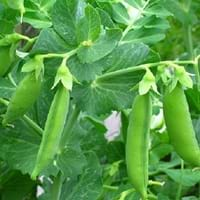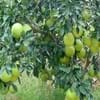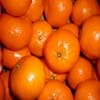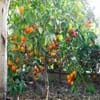Life Span
Perennial
Annual
Origin
Southeastern Asia, Polynesia
Mediterranean
Types
African Shaddock,Chandler Pomelo,Kao Phuang Pomelo,MeloGold Pomelo-Grapefruit,Minneloa Tangelo
Sugar Bon pea, Super Sugar Snap bean
Number of Varieties
Not Available
Habitat
Clay soil areas, Coastal Regions
Fields, Loamy soils
USDA Hardiness Zone
10-11
Not Available
Sunset Zone
H1, H2, 8, 9, 12, 13, 14, 15, 16, 17, 18, 19, 20, 21, 22, 23, 24
A1, A2, A3, H1, H2, 1a, 1b, 2a, 2b, 3a, 3b, 4, 5, 6, 7, 8, 9, 10, 11, 12, 13, 14, 15, 16, 17, 18, 19, 20, 21, 22, 23, 24
Habit
Oval or Rounded
Vining/Climbing
Minimum Width
Not Available
Flower Color
White
White, Pink, Lavender
Flower Color Modifier
Bicolor
Bicolor
Fruit Color
White, Yellow, Light Pink
Green
Leaf Color in Spring
Green, Dark Green
Green, Sea Green, Gray Green
Leaf Color in Summer
Green, Dark Green
Not Available
Leaf Color in Fall
Green, Dark Green
Green, Blue Green, Gray Green
Leaf Color in Winter
Light Green
Green, Blue Green, Gray Green
Leaf Shape
Compound
Egg-shaped
Plant Season
Spring, Summer, Fall, Winter
Spring, Fall, Winter
Sunlight
Full Sun, Partial Sun
Full Sun, Partial Sun
Type of Soil
Loam, Sand
Clay, Loam, Sand
The pH of Soil
Acidic, Neutral
Neutral
Soil Drainage
Well drained
Well drained
Bloom Time
Indeterminate
Early Spring, Spring, Late Spring, Fall, Late Fall, Early Winter, Winter, Late Winter
Tolerances
Drought
Dry Conditions, Salt and Soil Compaction, Variety of soil types
Where to Plant?
Ground
Ground
How to Plant?
Grafting, Seedlings
Seedlings
Plant Maintenance
Medium
Medium
Watering Requirements
Needs watering once a week, Requires consistently moist soil
Allow to dry out slightly between watering, Needs watering once a week
In Summer
Lots of watering
Consistently
In Spring
Moderate
Adequately
In Winter
Average Water
Less Watering
Soil pH
Acidic, Neutral
Slightly Acidic
Soil Type
Loam, Sand
Clay, Loam, Sand
Soil Drainage Capacity
Well drained
Well drained
Sun Exposure
Full Sun, Partial Sun
Full Sun, Partial Sun
Pruning
Remove damaged leaves, Remove dead branches, Remove dead leaves
No pruning needed, Prune in flowering season, Remove damaged leaves
Fertilizers
All-Purpose Liquid Fertilizer
Compost, fertilize in winter
Pests and Diseases
Red blotch
Downy mildew, Gall Insects, Leaf curl, Peach Leaf Curl, Powdery mildew, Root rot
Plant Tolerance
Drought
Light Frost
Flower Petal Number
Single
Single
Fragrant Bark/Stem
Yes
No
Foliage Texture
Medium
Medium
Foliage Sheen
Glossy
Matte
Attracts
Birds, Butterflies
Not Available
Allergy
Dermatitis, Skin irritation
Diarrhea, Intestinal gas
Aesthetic Uses
Not Available
As decorated salad
Beauty Benefits
Brightens the skin complexion, Skin Problems
Remove blemishes, Skin Problems
Environmental Uses
Air purification, Food for birds, Food for insects
Fixes Nitrogen, Food for animals, Very little waste
Medicinal Uses
Acne, Detoxification, Digestion problems, epilepsy, Kidney Stones, Nutrients, Obesity
No Medicinal Use
Part of Plant Used
Flowers, Fruits, Leaves, Seeds
Leaves, Seeds
Other Uses
febrifuge, Tea-like beverage can be brewed
Cosmetics, Making Shampoo, Used as a nutritious food item, Used As Food
Used As Indoor Plant
Insignificant
No
Used As Outdoor Plant
Yes
Yes
Garden Design
Container, Edible, Fruit / Fruit Tree, Shade Trees, Tropical
Container, Edible, Herb, Vegetable, Vine
Botanical Name
CITRUS maxima 'Hirado'
PISUM sativum
Common Name
pomelo, pomello, pummelo, pommelo, pamplemousse, jabong, shaddick,or shaddock
Garden Pea
In German
Pampelmuse
Kefe
In French
Citrus maxima
Erbse
In Spanish
Citrus maxima
guisante
In Greek
Not available
μπιζέλι
In Portuguese
Pomelo
ervilha
In Polish
Pomarańcza olbrzymia
groch
In Latin
Citrus maxima
pea
Phylum
Magnoliophyta
Magnoliophyta
Class
Magnoliopsida
Magnoliopsida
Clade
Angiosperms, Eudicots, Rosids
Dicotyledonous
Tribe
Citreae
Not Available
Subfamily
Aurantioideae
Not Available
Number of Species
Not Available
Importance of Pummelo and Sugar Snap Pea
Want to have the most appropriate plant for your garden? You might want to know the importance of Pummelo and Sugar Snap Pea. Basically, these two plants vary in many aspects. Compare Pummelo and Sugar Snap Pea as they differ in many characteristics such as their life, care, benefits, facts, etc. Every gardener must at least have the slightest clue about the plants he wants to plant in his garden. Compare their benefits, which differ in many ways like facts and uses. The medicinal use of Pummelo is Acne, Detoxification, Digestion problems, epilepsy, Kidney Stones, Nutrients and Obesity whereas of Sugar Snap Pea is No Medicinal Use. Pummelo has beauty benefits as follows: Brightens the skin complexion and Skin Problems while Sugar Snap Pea has beauty benefits as follows: Brightens the skin complexion and Skin Problems.
Compare Facts of Pummelo vs Sugar Snap Pea
How to choose the best garden plant for your garden depending upon its facts? Here garden plant comparison will help you to solve this query. Compare the facts of Pummelo vs Sugar Snap Pea and know which one to choose. As garden plants have benefits and other uses, allergy is also a major drawback of plants for some people. Allergic reactions of Pummelo are Dermatitis and Skin irritation whereas of Sugar Snap Pea have Diarrhea and Intestinal gas respectively. Having a fruit bearing plant in your garden can be a plus point of your garden. Pummelo has showy fruits and Sugar Snap Pea has showy fruits. Also Pummelo is not flowering and Sugar Snap Pea is not flowering . You can compare Pummelo and Sugar Snap Pea facts and facts of other plants too.





